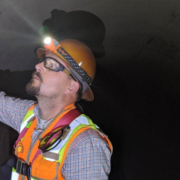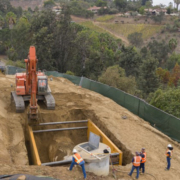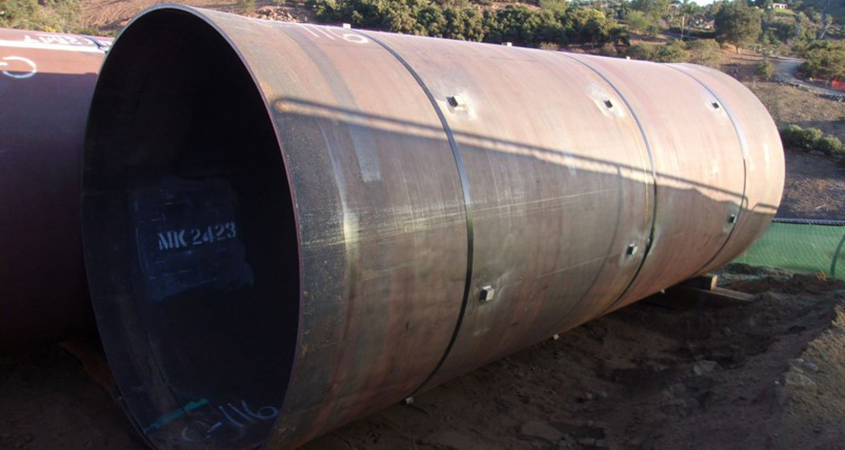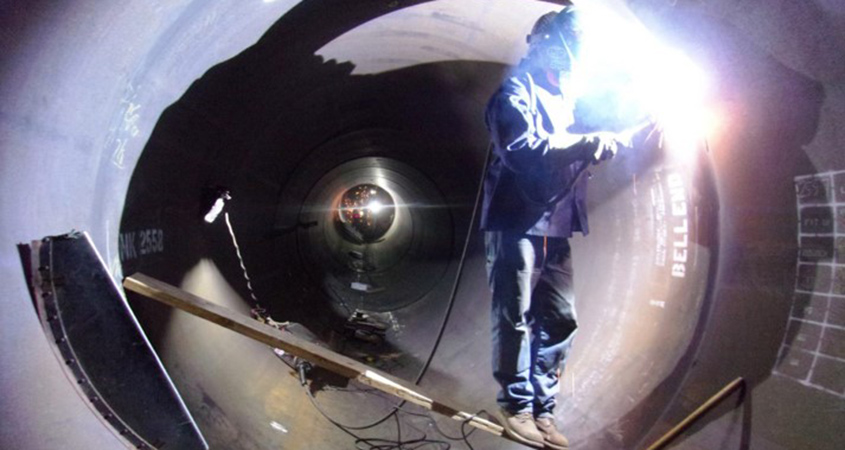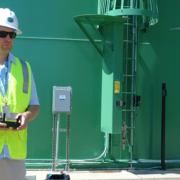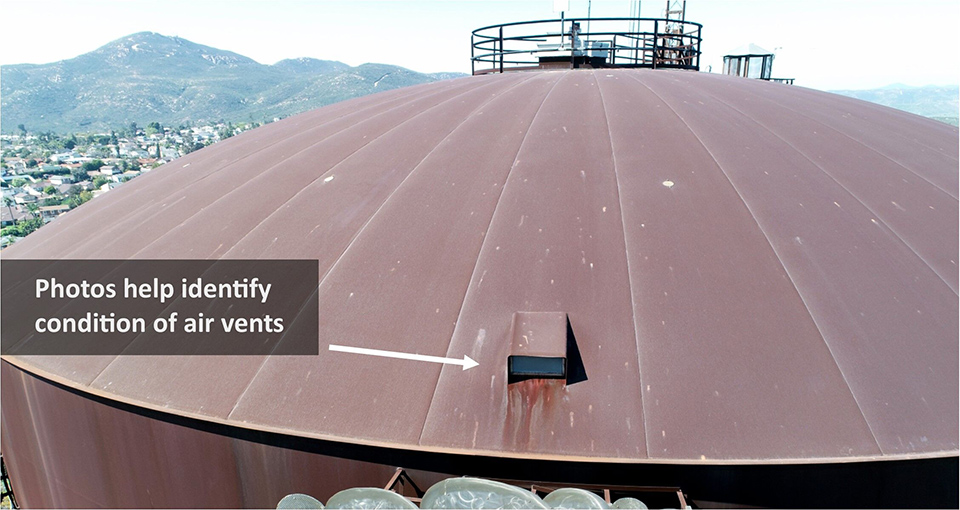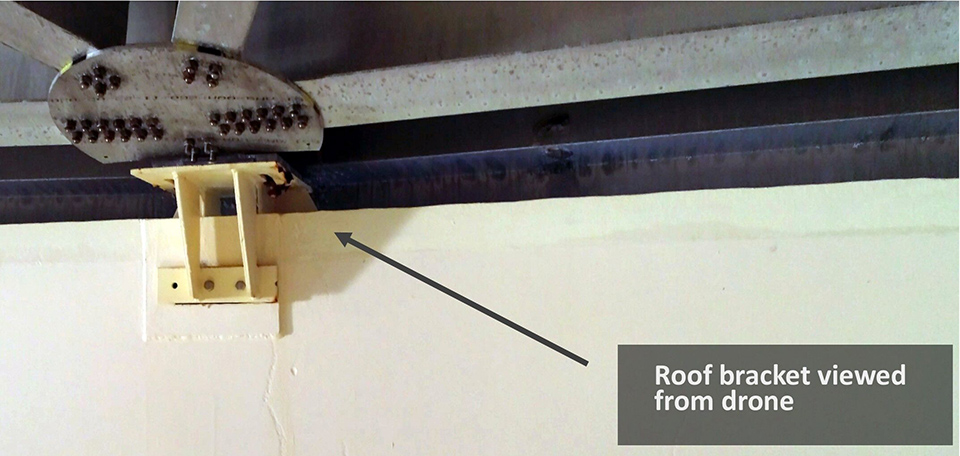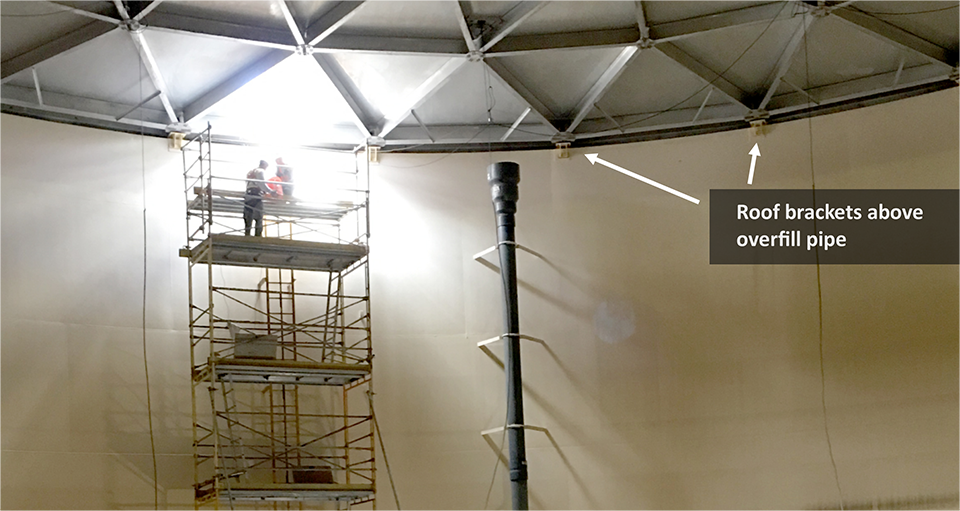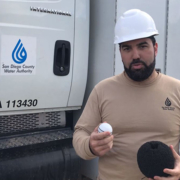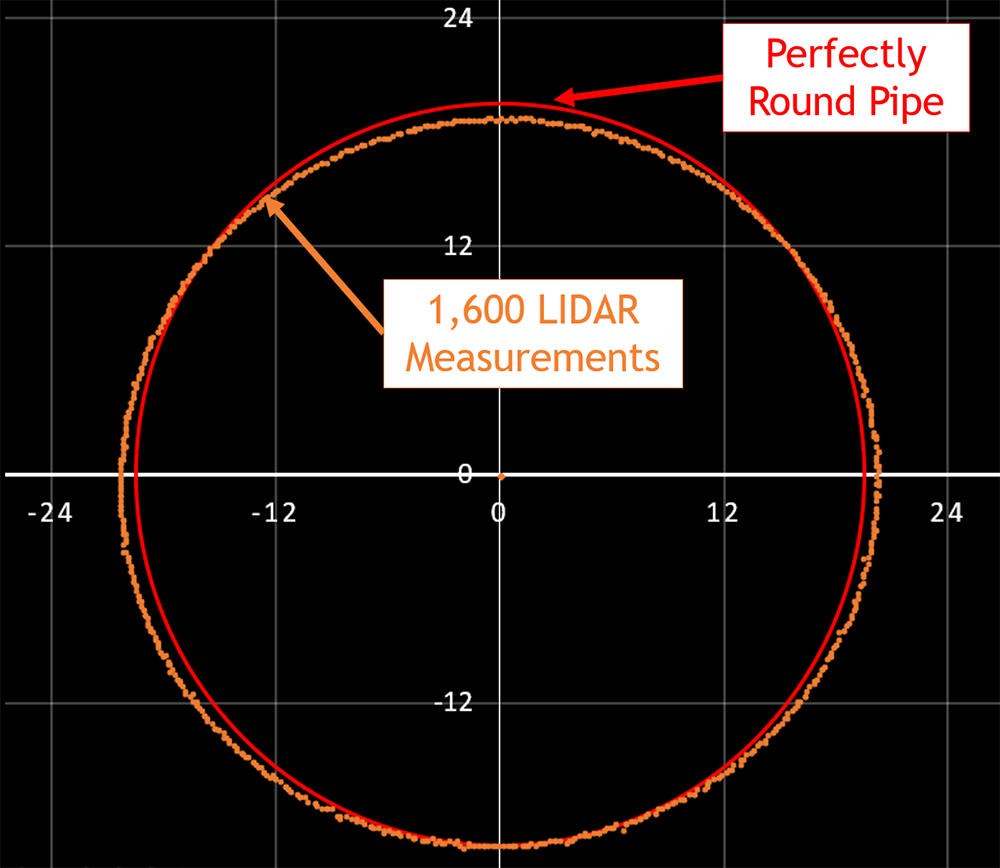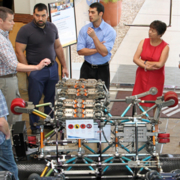Pipeline 4 Repairs Underway in North San Diego County
A recently discovered leak in a section of a pipeline in North County will be repaired in coming months while Pipeline 4 returns to service.
Crews have installed bulkheads in the pipeline to isolate a portion of Pipeline 4 for repairs. This will allow the pipeline to continue treated water deliveries throughout the county in a modified fashion starting the week of Sept. 16 and restores full service to retail water agencies. With the leaky section isolated, crews will make necessary repairs.
Four Water Authority member agencies – Fallbrook PUD, Rainbow MWD, Valley Center MWD, and Vallecitos Water District – have taken steps to manage water supplies while the pipeline was shut down to install the bulkheads.
Carbon fiber section will protect pipe
In August, Water Authority crews detected a leak in the 90-inch diameter Pipeline 4, one of five major pipelines the agency operates. The leaky section is near Camino Del Rey in Bonsall, in an area with no adjacent homes or business.
To find the cause of the leak, the Water Authority dewatered the pipe starting Sept. 9. Preliminary results of the investigation are that a weld seam, connecting a steel pipe section to a pre-stressed concrete cylinder pipe, separated in an area of very high water pressure.
The Water Authority is preparing to install a carbon fiber liner to give the pipeline several more years of service while a longer-term solution is developed and deployed.
After repairs are completed, a second 10-day shutdown of Pipeline 4 will be needed to remove the bulkheads and return the pipeline to full, normal operations.
Proactive approach keeps pipelines healthy
As part of its proactive approach to asset management, the Water Authority continually assesses and rehabilitates pipelines serving the San Diego region. The agency operates 310 miles of large-diameter pipelines, along with 1,600 aqueduct-related structures, and approximately 100 metering/flow-control facilities.
Approximately 82 miles of the pipelines are pre-stressed concrete cylinder pipes. These types of pipes were installed between the early 1960s and late 1980s, and have experienced premature failures and shown areas of degradation.
By relining the pipes or conducting timely repairs with the latest technology, the Water Authority has avoided major pipeline failures for more than decade.

